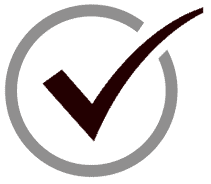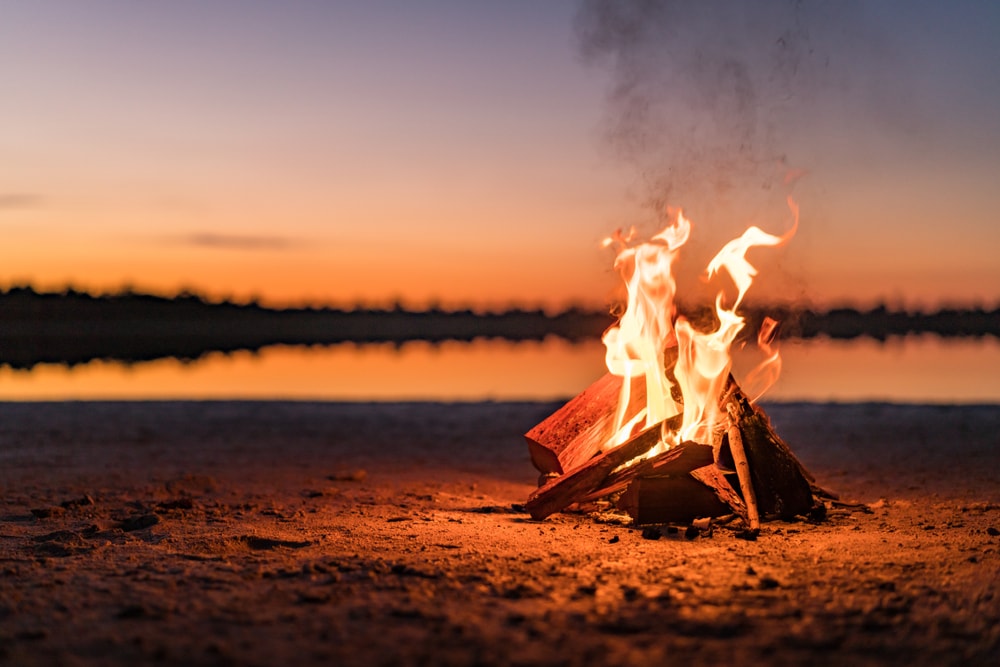
Campfires are staples on camping trips, invaluable in a survival situation, and perfect for roasting marshmallows. But how hot is a typical campfire? Can you make them hotter or cooler? And what can you use that heat for?
In this article, we’ll explain the temperature of an average campfire, what factors impact how hot it gets, how you can tell, and answer other common questions about campfires.
You May Also Like: Staying Warm In Winter: How To Keep A Fire Going As Long As You Want!
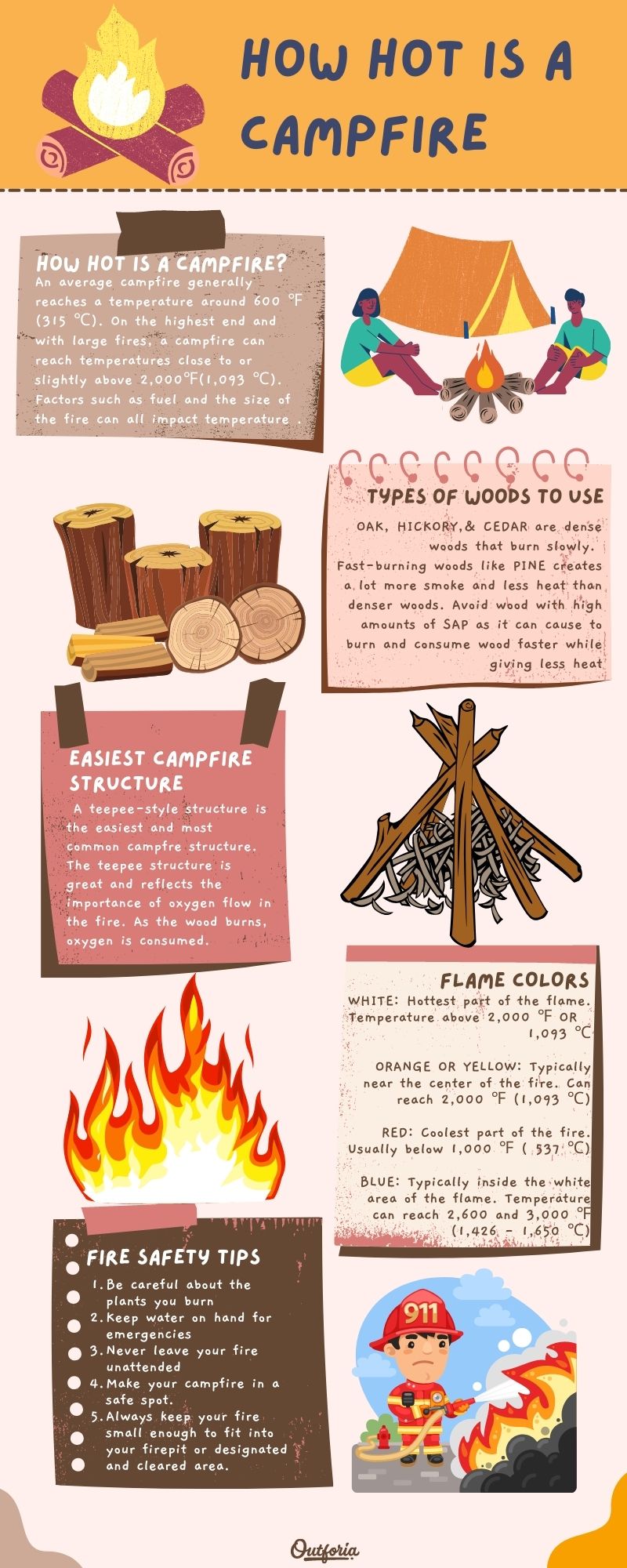
share this image on your site
<a href="https://outforia.com/how-hot-is-a-campfire/"><img style="width:100%;" src="https://outforia.com/wp-content/uploads/2022/03/how-hot-is-a-campfire-infographic.jpg"></a><br>how hot is a campfire <a href="https://outforia.com">Outforia</a>How Hot Is A Campfire
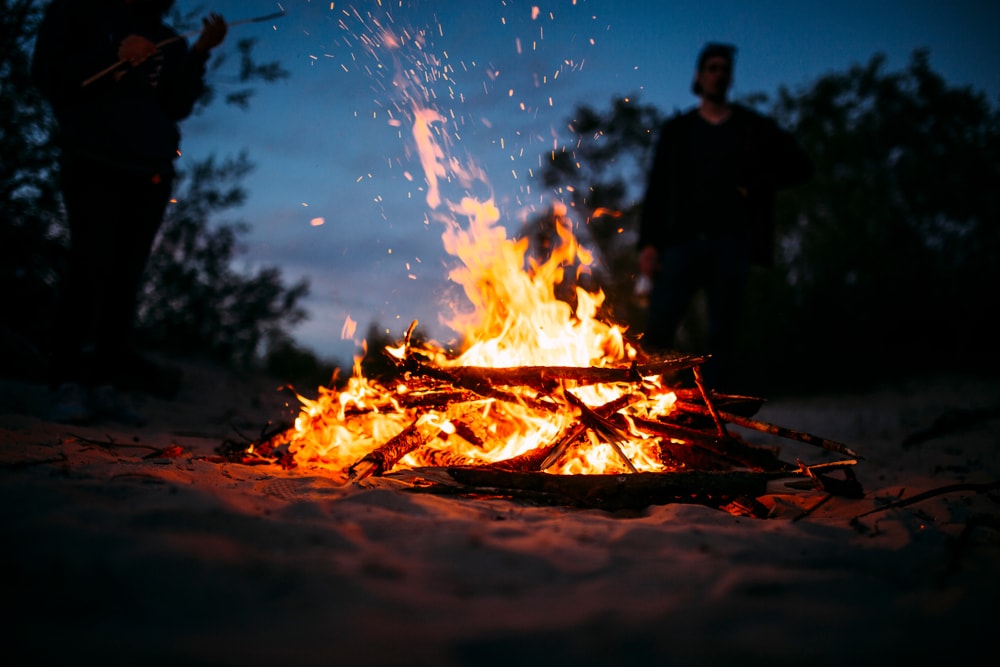
The ordinary, average campfire you’d burn in a fire pit or sit around out in the woods generally reaches a temperature around 600 degrees Fahrenheit (315 degrees Celsius). On the highest end and with large fires, a campfire can reach temperatures close to or slightly above 2,000 degrees Fahrenheit (1,093 degrees Celsius).
Factors such as the kind of fuel you burn, the size of the fire, and even the shape of your fire can all impact the maximum temperature your campfire reaches.
Types of Wood for a Campfire
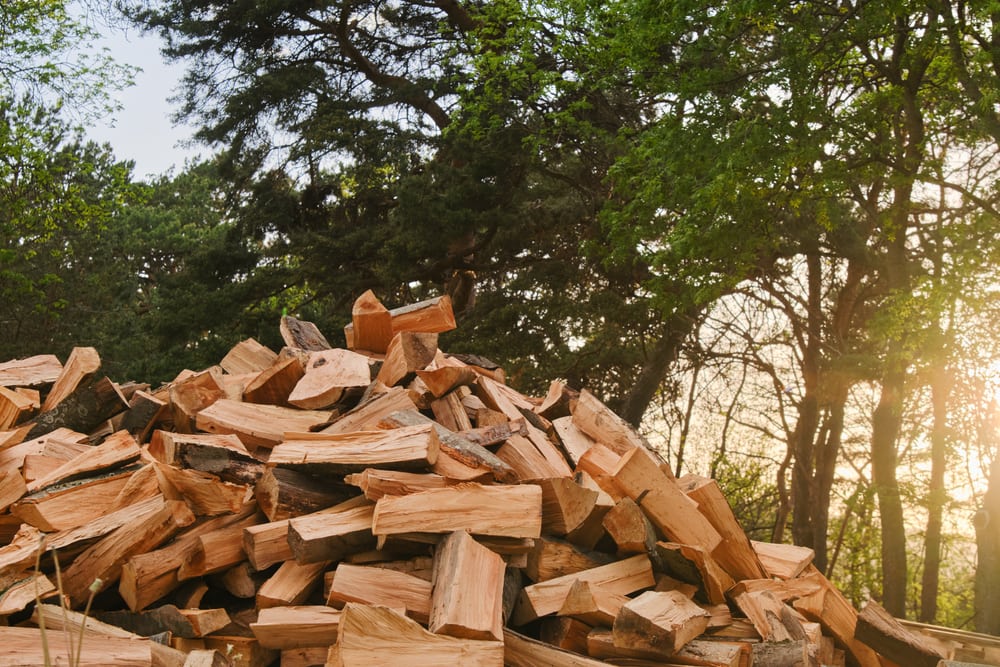
Since you’ll typically be burning wood in a campfire, we’ll assume the fuel you’re burning is wood. Different kinds of wood burn at different rates and temperatures, meaning some wood simply gives off more heat when burned.
Oak, hickory, and cedar are dense woods that burn slowly. While these types of wood are harder to cut, they put off more heat than other varieties of wood.
Fast burning wood like pine creates a lot more smoke and less heat than denser woods. It’s best to avoid wood with high amounts of sap, especially if you’re going to use your fire to cook. Using these woods will cause your fire to burn out faster and consume wood faster, all while giving off less heat.
The sap content is important because it also represents the dryness of your fuel. The better-dried the wood you intend to burn, the better and hotter it will burn. It’s a good idea to place extra or wet wood around the edge of your fire pit to help dry it out before adding it to the fire.
Size of the Fire and Wood Pieces
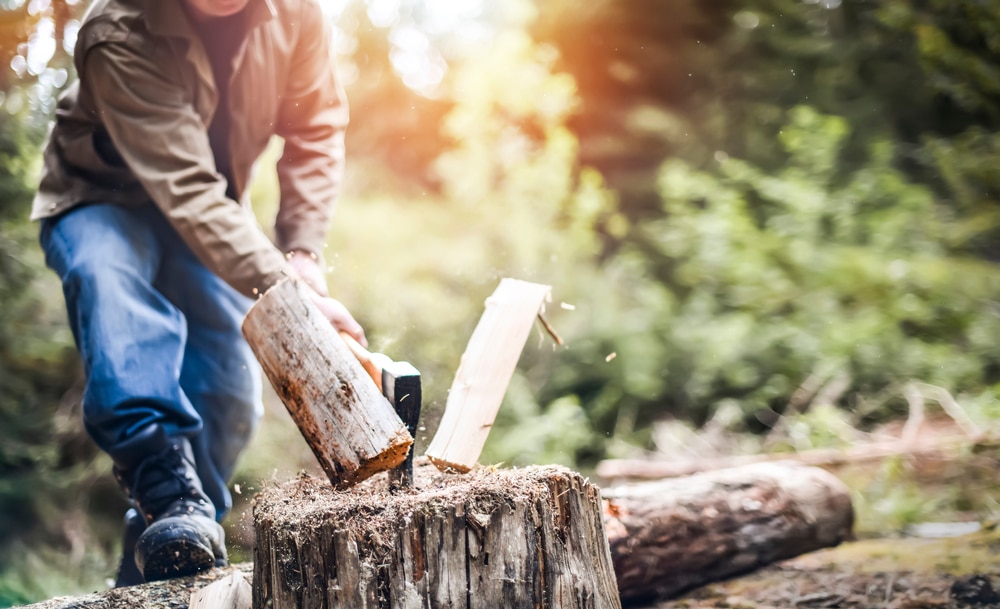
The overall size of the fire will impact how hot the fire burns as well. Bonfires and larger fires consume more fuel and oxygen, allowing them to reach hotter temperatures. A large bonfire can reach temperatures exceeding 2,000 degrees Fahrenheit (1,000 degrees Celsius).
Generally, you’ll want to shoot for a small or medium-sized fire. These sizes of fires are easier to manage and control and are much better suited to keeping you warm or cooking.
Bigger pieces of firewood can also increase the temperature of the blaze since they’re adding more fuel. You want to work with manageable pieces around a foot (0.3 meters) long and under six inches (15 cm) wide.
A good fire is based on differently sized fuels: tinder, kindling, and firewood.
- Tinder: Twigs, shavings, bark, or leaves. They catch fire and burn quickly, making tinder an excellent material for starting a fire.
- Kindling: Small pieces of wood, twigs, or branches. These are larger than tinder, but not full-sized pieces of firewood. They allow the fire to grow beyond the tinder and give it enough heat to get going.
- Firewood: Larger pieces of wood or branch sections. Firewood is the larger piece of wood that really fuels the fire. They burn longest and give off the most heat, but are hard to catch without a fire already going.
To start your fire, you’ll want to begin with a tinder bundle. This should be a dry, fibrous material with a lot of surface area. Once it’s lit, you’ll place it inside a structure you make with kindling and firewood. More on the structure of your fire next.
You may also like: Learn the Difference in Size and Purpose Between Campfire vs Bonfire
Campfire Structure
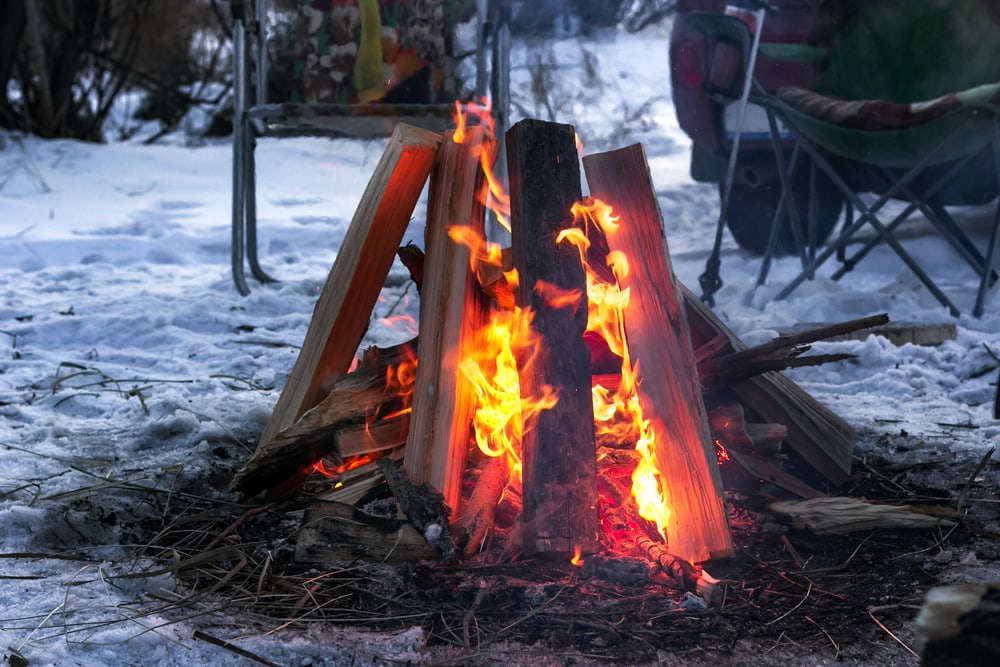
There are a million ways to build a campfire, but a teepee-style structure is the easiest and most common way. You’ll want to build a downward-facing cone out of smaller sticks and twigs, then layer on larger pieces of wood.
Inside the cone, you want to put as much tinder material as possible without blocking airflow. When you light your tinder bundle, you can place it inside the structure and then push air through it to get a roaring fire going very quickly.
This teepee structure is great and reflects the importance of oxygen flow in the fire. As the wood burns, oxygen is consumed. To burn hot, the fire needs good airflow underneath the material being burned. Without it, the fire will go out or cool dramatically.
The more airflow through the burning structure, the hotter your fire can get.
You may also like: Never Worry About How Much Firewood You Need with These Pro Tips on How Much Firewood You Need in Camping
Additional Campfire Notes
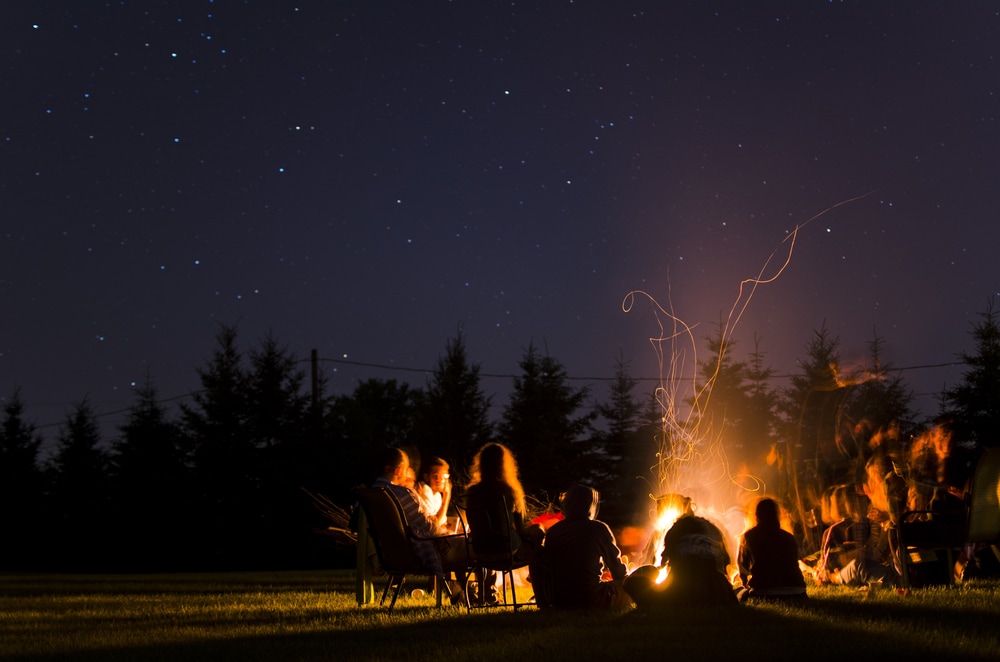
The color of your fire, from the plumes to the burning coals, can tell you how hot it is. We’ll go more into that later, but the important part, for now, is that the fire is usually brighter near the source.
Fires don’t burn at a uniform temperature throughout. Those brighter areas are an indicator of the hotter parts of a fire. The closer you are to the center, the hotter the fire burns.
How Can You Tell How Hot A Campfire Is?
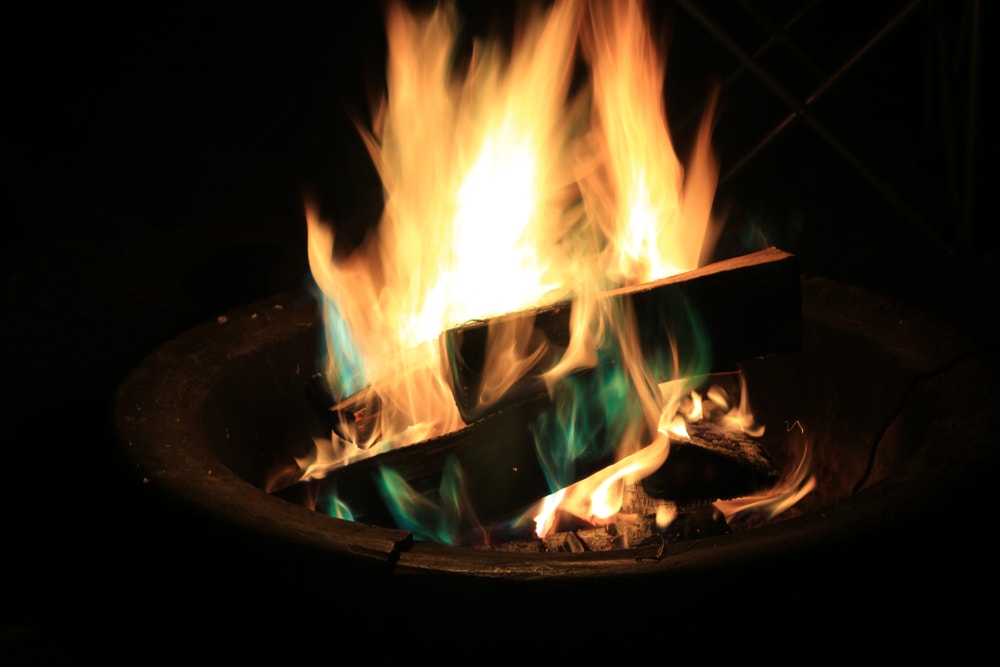
Looking at a fire, you can usually see flames of varying colors. You can use those colors to determine how hot that part of the fire is.
White: Normally you’ll see white flames closest to the wood. This is the hottest part of the flame, with a temperature above 2,000 degrees Fahrenheit (1,093 degrees Celsius).
Orange or Yellow: You’ll typically see these colors pluming off of the wood or near the center of the fire between fuel sources. Temperatures in this part of the fire can reach up to 2,0000 degrees Fahrenheit (1,093 degrees Celsius).
Red: A deep red color is one of the coolest parts of the fire, usually at or below 1,000 degrees Fahrenheit (537 degrees Celsius). This is the most common color for coals and the plumes of the fire.
Blue: You’ll typically see blue inside the white area of the flames. These are even hotter, and the color appears when the temperatures reach between 2,600 and 3,000 degrees Fahrenheit (1,426 to 1650 degrees Celsius).
Regardless of whether you can tell how hot parts of the fire are by color, please don’t stick your hand in to find out for sure.
As a neat trick, you can use some common chemicals to make your campfire change colors. Here’s a list of interesting ones for people who’d like to give it a try:
- Red: Strontium chloride or strontium nitrate
- Orange: Calcium chloride
- Yellow-Green: Barium chloride
- Orange-Yellow: Sodium chloride (table salt)
- Green: Borax, Copper(II) sulfate, boric acid
- Blue: Copper(I) chloride and butane
- Violet: 3 parts potassium sulfate, 1 part potassium nitrate (saltpeter)
You may also like: No Tent? No Problem! Check out these Pro Tips on How to Make a Camping Tent from Scratch
Why Build a Campfire Anyways?
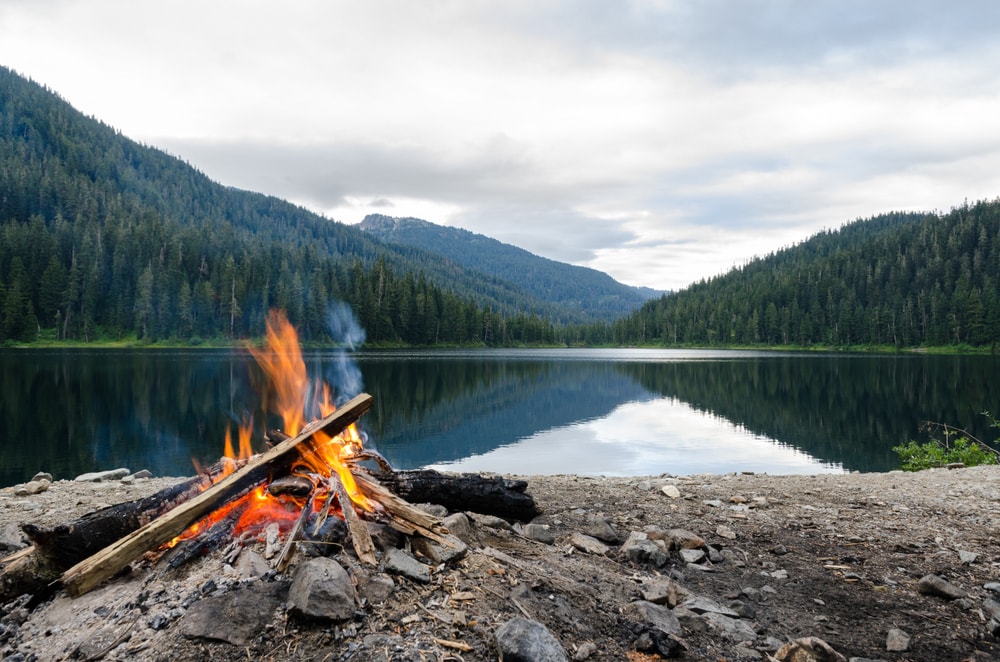
Now that we understand how hot a normal campfire can get, the real question left is why would anyone want to build a fire in the first place?
Throughout our history and going back to the dawn of the human species, we’ve used fire as a tool. There are, of course, functional reasons to build a fire like cooking or warmth, but there’s also something inside of us that gives us a feeling that we are doing something right.
We’ll delve into some of the reasons why we would build a fire in this section
Cooking
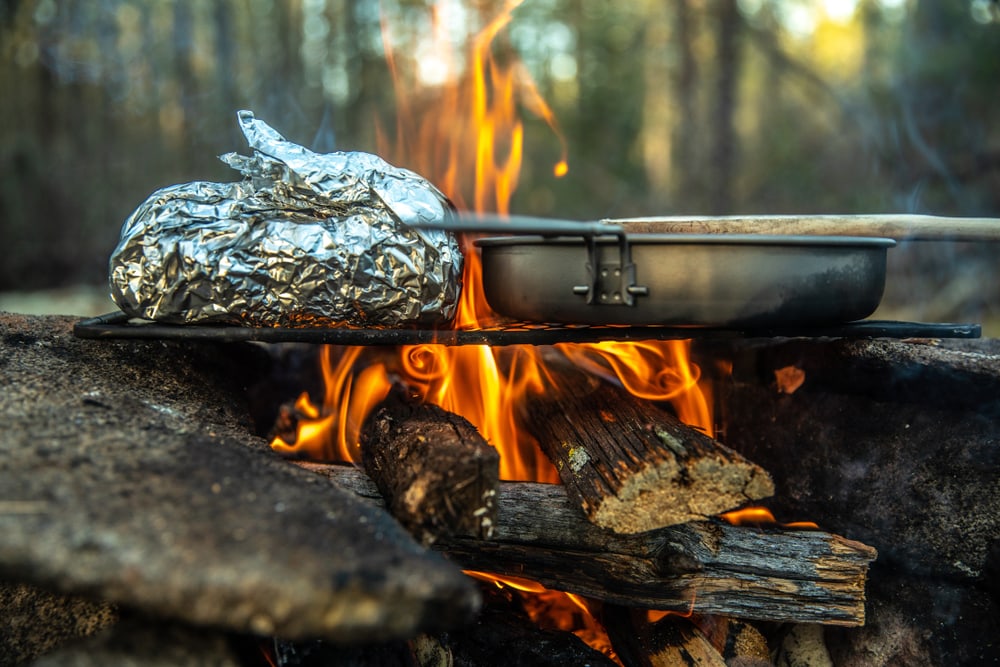
The discovery of fire helped facilitate the evolution of humans thousands and thousands of years ago simply because it allowed us to cook food. Being able to cook made eating foods that would otherwise be inedible possible, such as tubers, just by softening them up.
Cooking food makes it more bioaccessible. What that means is that the calories and nutrients in the food are easier for us to make use of when food is cooked. It’s also much safer to cook food, killing off pathogens inside the food that could get us sick.
Cooking food over a roaring fire is something we’ve done for millennia. Many people still do it today.
Campers in the modern world have plenty of options for cooking, such as gas stoves and other campfire cooking equipments. A hot meal is something that’s rejuvenating after a long day of trekking or exploring, and you can use a campfire to cook dinner.
If you were to end up lost in the woods, a fire is invaluable when it comes to food and water. Boiling water while camping and cooking food can allow you to consume both things without ending up getting sick.
On a weekend trip, it’s a great bonding experience to sit around the campfire and roast hot dogs or marshmallows.
Warmth
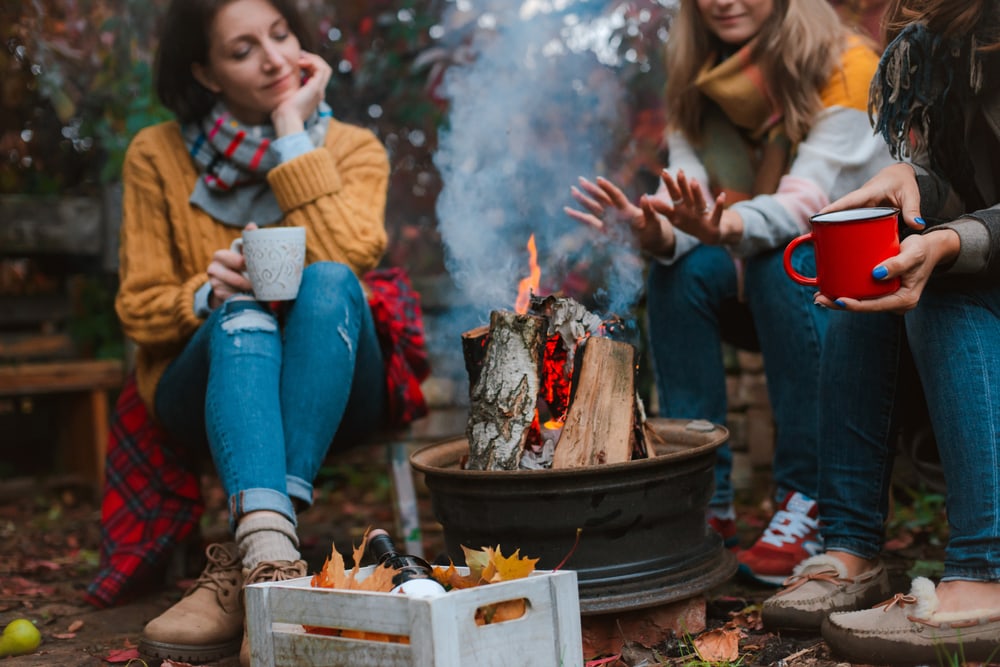
Humans originated in warm climates and our biology is better at getting rid of excess body heat than retaining heat. Fire is what made it possible for our early ancestors to spread across the world, whether northward into the Arctic Circle or even into the Americas.
We get it, fires are hot. But that heat is important for keeping you warm. Whether you’re just out camping in colder months or use wood stoves to heat your home, fire is essential. It allows you to warm up and dry off when it otherwise wouldn’t be possible.
As a Tool
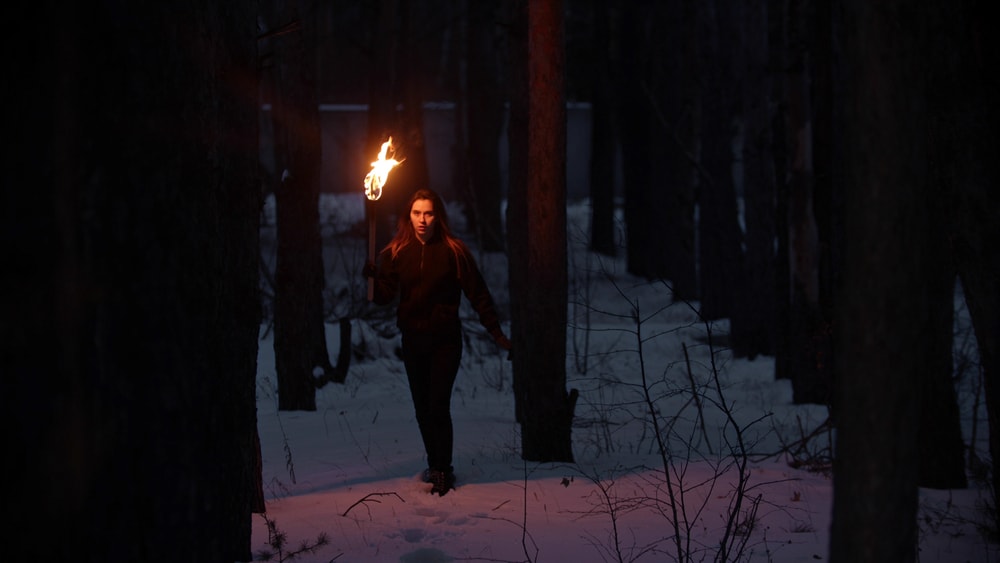
Fires and campfires in particular, aren’t just for cooking food or bringing warmth. Humans have used fire as a tool for any number of purposes.
Fire is a good tool for scaring off dangerous animals. They will generally fear fire and recognize it as dangerous. That’s part of the reason when you sit near a fire you feel more relaxed, you instinctively feel safer from the boogeyman next to it.
Fire is useful for all kinds of crafts as well. Charcoal provides a way to write or draw. Fire is a much more efficient way to shape wood for large projects like canoes or felling trees. Instead of spending time and tons of energy sawing or scraping wood away, you can slowly burn it off.
Humans also used fire as a way to clear land. Burning off plant life clears the way for agriculture but also adds nutrients to the soil that helps crops grow strong.
As a Gathering Place
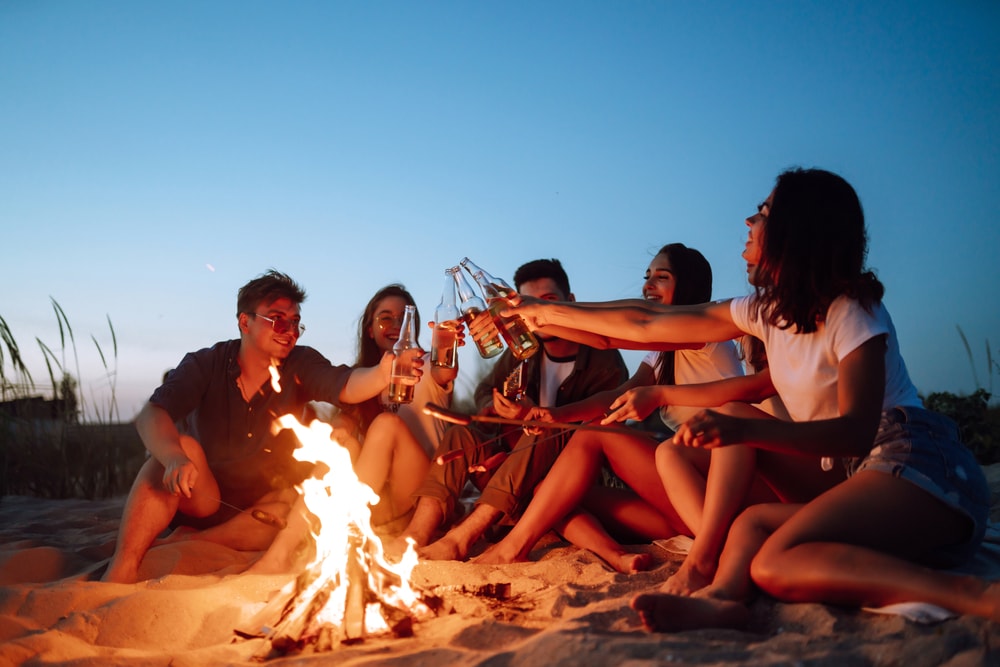
Campfires have marked homes or safe passage forever. The light of a fire can allow you to see even on the darkest night when you’re traveling or stand as a viewpoint of where you need to get to.
People have gathered around campfires forever as well. It’s the place we came to eat, to tell stories, to play campfire games, and to rest. Building campfires today speaks to that tradition inside of us and keeps it alive.
You may also like: Live Outdoors with These Pro Tips on How to Build Your Permanent Shelter in the Wilderness
Fire Safety Tips
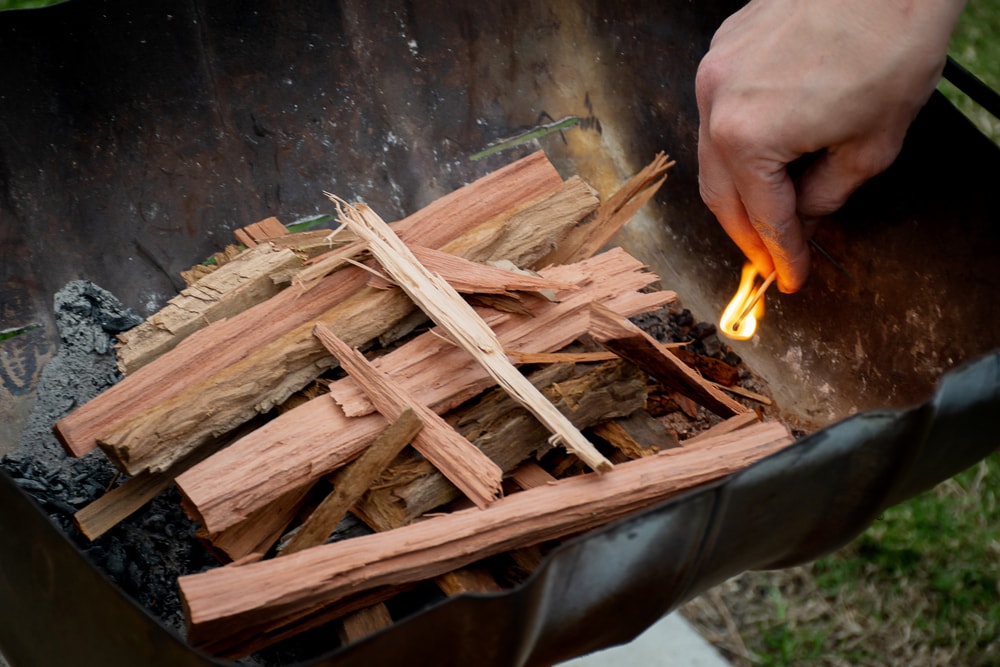
It wouldn’t be an article about fires without throwing in safety tips. Starting the campfire in a firepit with kindling and safety matches. Fire can be incredibly dangerous and destructive when not controlled properly. Here are a few tips for keeping your campfires under control.
You may also like: Learn How You Can Start a Fire Just By Using Sticks
Putting Out a Fire
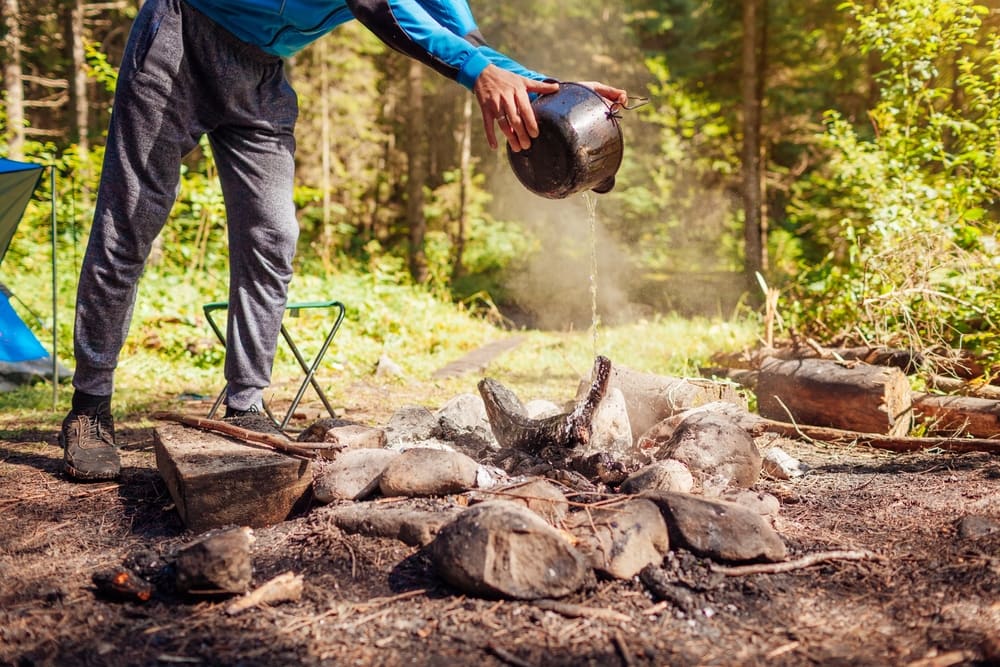
This one deserves its own mini-section because there are misconceptions about how to put out fires. Following these directions should ensure you aren’t leaving behind a campfire that can re-light.
Make sure the fire is out completely when you leave. You’ll need a generous amount of water since water quickly removes heat from coals.
Before dousing the fire, grab a fire-poking stick and spread out the coals or logs still burning. Dispersing them removes the structure that allows airflow and helps it cool faster.
You CAN bury a fire to put it out, but coals can remain burning for long periods even when buried. The best thing to do is to put out your fire with water, multiple times over.
Pour water over the remaining coals. It will steam and smoke and sputter, and that’s okay. Give it a few minutes, then do it again. I personally like to repeat this step until there isn’t a hissing sound coming from the coals and there is minimal or no smoke rising when I pour water over the fire.
You may also like: Check out These 6 Different Awesome Camping Styles to Try on Your Next Outdoor Adventure
How Hot is a Campfire FAQs
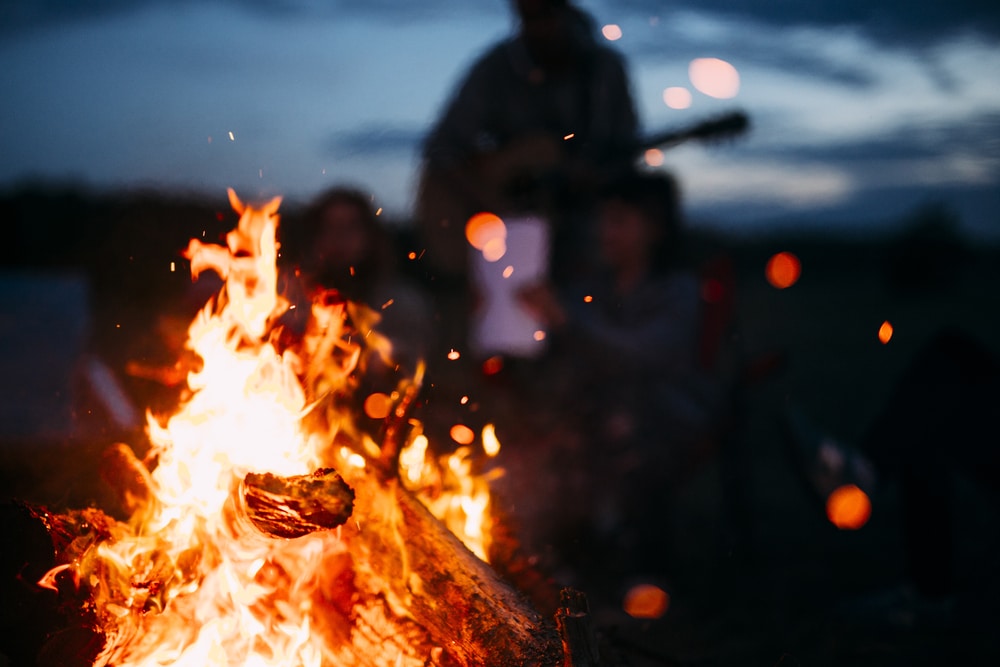
1. What can an average campfire melt?
Stainless steel and cast iron have high melting points (2750°F /1510°C and 2060°F/1127°C respectively). These are typically too high for an average campfire to melt and are the reason why these materials make great utensils for campfire cooking.
Aluminum has a melting point of 1220°F (660°C). If you throw an empty can of soda into a fire, the can will melt, and very little will be left behind.
Glass won’t melt in your typical campfire. Glass has a melting point between 1400 and 1600 degrees Celsius (2,250 to 2,900 degrees Fahrenheit). Even large bonfires usually don’t get hot enough to truly melt glass.
2. Where can I make a campfire?
Every state, county, city, or area has different rules when it comes to fires. In many places, it’s completely illegal to start a fire or you must do so in a designated area. You should always check for legal guidelines before setting up and starting a campfire.



